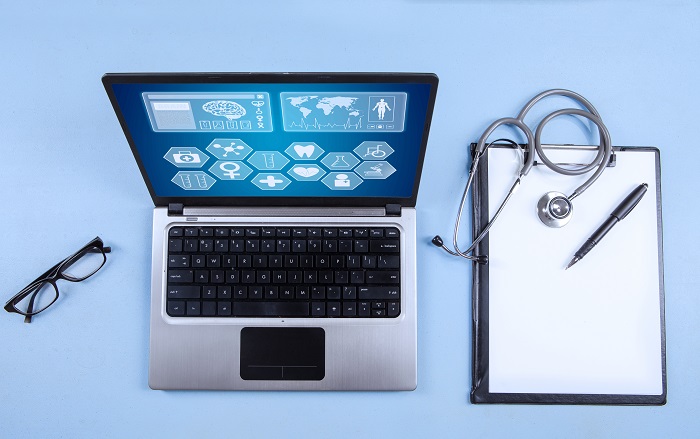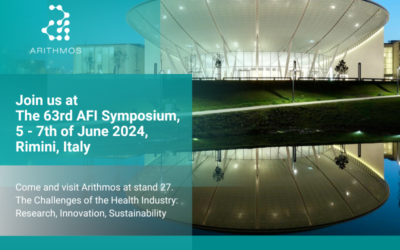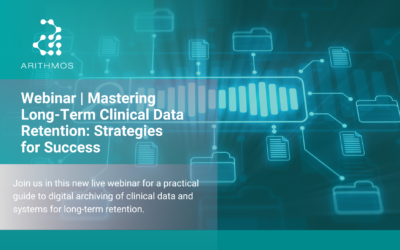When the COVID-19 pandemic started, traditional monitoring and quality management of sites became not only expensive and time-consuming but also impossible. However, the clinical monitoring function remained vital for ensuring that clinical trials were conducted in a safe, effective, and accurate way. With the start of the pandemic, remote monitoring became not just a trend, but an absolute necessity, making it a solution that more and more companies are embracing.
However, embracing new technology might be challenging. We at Arithmos talked to Ken Lowie, General Manager US Operations at Agatha Inc and expert in Life Sciences technology solutions, to understand what are the advantages of remote monitoring, what are the most frequent challenges related to it, and how it will evolve in the future.

What distinguishes remote monitoring from classical monitoring?
The monitoring function in clinical trials is well understood and part of every study. Typically a site visit is involved, and the monitor inspects processes and documents, identifying issues that need to be addressed by the site team.
Remote monitoring is just separating the process from the travel. Most monitoring tasks can be done from a remote location without a visit to the site. This eliminates costs and reduces the time required for monitoring activities.
With the technologies available today, monitors can review documents, communicate issues, and track all the related tasks.
Why did Agatha Inc. decide to add a remote monitoring app to its portfolio?
We have had the ability to support remote monitoring for quite some time with our Agatha Clinical application. However, we broke that capability out into a dedicated, purpose-built application for use by clinical sites early this year.
With COVID severely restricting travel, our customers came to us looking for a solution to ensure trials could continue without site visits. Agatha Remote ISF was the result. It is a cloud-based application for sites to store trial documents, for a monitor to review those documents, and for both to share tasks and information.
What are the main advantages of remote monitoring?
The obvious benefit of a shift to a remote model is not having to travel, which saves money and saves time.
There are important additional benefits, however. We find that when the monitoring function is shifted to a remote model, the process itself tends to be made more consistent. It seems that when it is executed remotely, the monitoring process is reevaluated and standardised into a very clear, repeatable set of steps that are fully documented.
The result is a more consistent process that monitors follow, which makes it more efficient. And the entire monitoring process is recorded in-process steps in the monitoring application, which enhances the ability to produce documentation of the monitoring process in the event of an audit.
Can you please tell a bit about Agatha’s experience in remote monitoring?
Agatha is focused on Clinical Operations processes, so we have understood the monitoring process since we began. And we have supported the monitoring process in our software from day one.
We added explicit support for remote monitoring as a distinct model with an application designed explicitly to support it in early 2020. Our customers use both our TMF application and Agatha Remote ISF together because they are a complementary set. The two apps share many functions and capabilities and are designed to allow site files to be reviewed and approved and, when ready, moved into Agatha Clinical, our eTMF application.
We also engage partners that bring deeper process expertise to our customers, which is true in the remote monitoring area. The shift in processes from a traditional model to a monitoring model requires planning and preparation across the organisation. While Agatha brings the technical expertise, we rely on partners like Arithmos to help our customers assess, plan and execute the transition from a traditional model to a remote model for monitoring.
How does a remote monitoring solution comply with the requirements of regulatory entities?
Shifting to a remote model is supported by all the regulatory authorities. In the USA, the FDA have been cheerleaders for remote monitoring. While regulators require monitoring, they do not in any way require site visits.
However, to be compliant, the application used for remote monitoring has to meet all the requirements of electronic record keeping (in the USA, that is 21 CFR Part 11). And if patient records are part of the monitoring document set, then privacy regulations must also be addressed.
What is the state of remote monitoring in the industry?
Remote Monitoring is a subject of intense interest but relatively slow adoption. Barriers to adoption include perceptions of high cost and complexity.
The word perception is key because software systems for life sciences in these areas have traditionally been (very) high cost and excessively complex. We now have a new generation of applications that are very affordable and much easier to use.
In this one area, smaller organisations typically have an advantage. The larger life sciences organisations have existing systems and processes that require significant effort to transition to a remote monitoring model. Smaller, younger, clinical-stage organisations benefit from having less rigid current systems — sometimes almost a “greenfield situation — and the transition to a remote model can be relatively straightforward.
In general, the reality is that life sciences organisations are notoriously conservative, so a shift from the traditional site visit model to a wholly remote model will take time. In the future, we think the reality will be a hybrid approach, with fewer site visits but not a complete shift to all monitoring tasks being conducted remotely.
What do you see as three main obstacles to adopting remote monitoring technology?
- The first obstacle is economic. Sites are the part of the ecosystem with the least money, so sponsors and CROs typically need to be the ones that embrace, drive, and fund remote monitoring solutions. On this point, it is essential to note that the limitations on the travel associated with COVID have made the economic benefits of remote monitoring very clear, as sponsors and CROs see reductions in travel expenses related to their trials.
- The second is the risk aversion that sites have regarding their management of patient data. They take this obligation very seriously, so any solution must instill confidence that the study documents are safe and protected.
- And the third is simply the resistance to change in our industry. Years of doing monitoring the same way — with onsite visits — will not change overnight. We need “early adopters” to pave the way and encourage the next group of “fast followers” by sharing their success stories.
How to choose the right remote monitoring solution to overcome the main related challenges?
The key is to understand the requirements that a remote monitoring application has to meet. It must be secure (to provide the confidence that sites need), extremely easy to use (so that site staff are not burdened), able to interact with the sponsor’s TMF system, and available at a cost that is easy to absorb.
Another consideration is the relationship between the application used for monitoring processes and all the other processes involved in clinical trials. The monitoring process is part of an overall ecology of systems related to planning trials, collecting trial data and documents, and managing quality. Ideally, the vendor provides applications not just for the monitoring function but for complementary processes like managing the Trial Master File and managing the quality process throughout the trial so that the systems involved can share information effectively.
How do you see remote monitoring evolving in future?
As mentioned above, we will see continued, gradual adoption of remote monitoring. The speed of the change will differ by country. Ultimately, we think there will be a hybrid model, with fewer site visits but not a complete shift to only remote processes.
Read to start builng your remote monitoring system?
As an official reseller of Agatha applications since 2019, Arithmos has been offering them as a part of a comprehensive package for efficient and lean document management.
Arithmos and Agatha offer a new approach to site monitoring by providing a comprehensive package for remote monitoring consisting of:
- Agatha ISF (Investigator Site File) – a complete, ready-to-use, and pre-validated solution for clinical sites that enables remote monitoring and quality management
- Business analysists’ support to ensure the lean integration of the remote monitoring solution
Investigator Site File enables sites to collect, store, and manage source documents for their clinical trials that is compliant with GCP and regulatory requirements such as HIPAA and 21 CFR Part 11. It also provides access to sponsors and CROs who need to monitor the conduct of a trial and the integrity of the trial data.
Our expert team of business analysts tailors the Investigator Site File to ensure the perfect fit in your company’s processes, optimise its operation and support you in organisational changes around remote monitoring.




